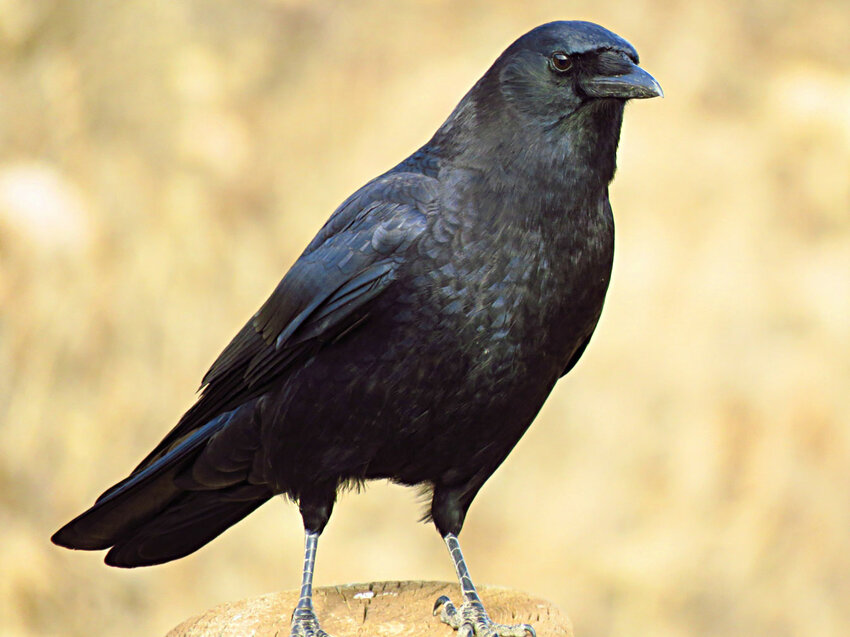
Photo courtesy Charles Martinez
This week’s Bird of the Week, compliments of the Weminuche Audubon Society and Audubon Rockies, is the American crow.
They are large, vocal, hang out in groups and have learned to live with people. All of these traits make the American crow recognized by even people unfamiliar with other birds. This bird consistently outnumbers all other birds counted in our local Christmas Bird Count by a large margin.
Despite the crow’s familiarity, a common challenge is crow or raven? Both are large, black birds and the larger size of the raven might not be apparent unless the two are in close proximity. Ravens tend to soar more than crows, who fly with a methodical flapping of wings. In flight, the crow’s tail appears square and flat and the raven’s more triangular. Crows are often seen in flocks and ravens alone or in pairs.
The American crow’s scientific name means “short beak,” but this is really only true in comparison to the bill of the raven, which is longer and stouter and more hooked at the end. The familiar “caw-caw” call of the crow is higher pitched than that of the raven.
Highly social and intelligent, American crows live in family groups which may number as high as 15. Displaying cooperative breeding behavior, young may stay in the home territory of their parents for five years or longer, assisting with feeding of the incubating female, nestlings and fledglings during breeding season. During other seasons, members of the family group may wander in search of food and return to the home territory from time to time.
In fall and winter, American crows roost at night in large numbers in communal sleeping areas. Increasingly, these roost sites are in urban areas where crows find safety from being shot, which often have higher temperatures than nearby rural areas, and have fewer great-horned owls plus the illumination to see the approach of these predators.
For information on events, visit www.weminucheaudubon.org and www.facebook.com/weminucheaudubon/.